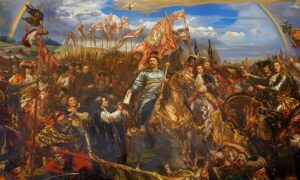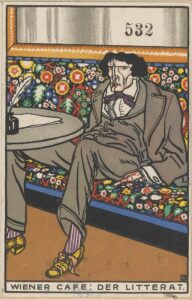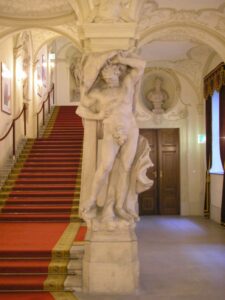Viennese Actionism was a radical and confrontational art movement that emerged in the 1960s.
It’s known for its shocking live performances that often involved nudity, violence, and bodily fluids.
We’ll jump into the heart of this avant-garde phenomenon, exploring its key players and the enduring impact they’ve had on contemporary art.
Stay with us as we unravel the provocative world of Viennese Actionism.
The Origins Of Viennese Actionism
Tracing the roots of Viennese Actionism takes us back to the tumultuous 1960s in Austria – a period marked by a conservative society clashing against burgeoning avant-garde expressions.
It was an era ripe for creative rebellion, which set the perfect stage for Viennese Actionism to emerge as a bold statement against the status quo.
The movement was initially conceived as a form of protest art that critiqued traditional aesthetic values and social norms.
Pioneers of the movement include artists such as Hermann Nitsch, Otto Muehl, Günter Brus, and Rudolf Schwarzkogler.
Each brought their unique perspective and aesthetic to the forefront of the movement’s development.
Their performances were designed not just to shock, but to question and expand the boundaries of what art could be:
- Hermann Nitsch orchestrated the Orgien Mysterien Theater, a form of performance that sought to dismantle taboos through ritualistic and sometimes disturbing acts involving animal carcasses and blood.
- Otto Muehl’s works involved spontaneous acts of physical exertion and direct engagement with the human body, challenging sensory thresholds and societal proprieties.
- Günter Brus is known for his Self-Paintings where he used his own body as a canvas, engaging in acts that tested the limits of self-expression and body politics.
- Rudolf Schwarzkogler staged a series of enigmatic actions which were often misinterpreted due to the graphic photographs that suggested self-mutilation.
These performances often took place in unconventional spaces like artist lofts or abandoned buildings, further emphasizing their break from traditional art venues and the movement’s underground nature.
The Vienna Actionists believed that disrupting the expected normalcy of both place and content could incite a form of artistic catharsis, both for the artist and the audience.
Through these radical gestures, they sought to transcend the passive nature of conventional artwork viewing and turn it into an immersive, transgressive experience.
Key Figures And Artists Of Viennese Actionism
Viennese Actionism birthed radical artists whose works remain significant in contemporary art discourse.
Hermann Nitsch, one of the founders, saw his work as a form of ‘Orgien Mysterien Theater,’ which involved intense and primal performances.
Nitsch’s Theater of Orgies and Mysteries became a notable series that pushed the boundaries of performance art, inviting audience engagement in unprecedented ways.
Otto Muehl created performances that were both shocking and critical of societal constructions.
Muehl’s controversial body of work was symbolic, utilizing the human form to explore power structures and psychological conditions.
His scandalous ‘material action’ pieces left a lasting impression on the performance art landscape and opened up conversations around the body in art.

Among these icons, Günter Brus stood out for his focus on the body as a canvas.
His concept of ‘body analysis’ dissected the relationship between the physical body and societal pressures.
Brus’s work often pushed him into conflicts with the law, emphasizing the provocative nature of Viennese Actionism.
Rudolf Schwarzkogler is remembered for his thought-provoking photographic sequences, which were misinterpreted as documentation of his actual self-mutilation.
Schwarzkogler’s art utilizes metaphor and stagecraft to communicate complex narratives, cementing his place in the movement Even though his short-lived career.
Each of these pivotal figures contributed uniquely to Viennese Actionism:
- Hermann Nitsch – ‘Orgien Mysterien Theater’,
- Otto Muehl – ‘material action’ art,
- Günter Brus – ‘body analysis’,
- Rudolf Schwarzkogler – staged photographic sequences.
Their collective work questioned artistic limits and societal norms, reshaping the role of art and artist in ways that still resonate.
Each performance, each piece carried a signature defiance, a shared desire to redefine what art could be and do in modern society.
This redefinition was not just seen in their shocking mediums, but also in their approach to the spaces in which art was traditionally encountered.
Characteristics And Themes In Viennese Actionism
Viennese Actionism is a quintessential example of a radical art movement, with characteristics and themes that broke significantly from traditional norms.

Key traits include:
- Performative Actions – Live events where the body is subjected to intense strain or even harm underscore the ephemeral nature of the performances.
- Visceral Materials – Use of organic substances like blood, animal entrails, and nudity to shock and engage audiences on a primal level.
This art form thrives on pushing boundaries.
Transgressive content is a staple, exploring themes of violence, sexuality, life, and death that challenge the viewer’s comfort and societal taboos.
The merging of art and life is central, with performances blurring the line between reality and artistic expression.
The body becomes a living canvas, challenging perceptions of human existence and societal constructs.
Artworks like Psycho-Physical Tests and Trainings by Otto Muehl emphasize this melding of life and art by forcing a confrontation with the raw and uncensored aspects of human nature.
In filmmaking, Viennese Actionism’s influence can be seen in the realm of experimental cinema.
Films adopt a similar raw and unfiltered approach to subject matter and visual style, often departing from conventional narratives to invoke emotion and provoke thought.

finally, the impact of Viennese Actionism extends beyond the visual, affecting the spectator’s psychological state.
The art movement’s legacy lives through its foundational challenge – questioning what art is and can be, while asserting the artist as a pivotal disruptor in the dialogue between societal norms and personal expression.
Controversy And Reception Of Viennese Actionism
The incorporation of shocking imagery and audacious performances in Viennese Actionism inevitably led to widespread controversy.
Pioneers of the movement, such as Hermann Nitsch and Otto Muehl, were frequently subjected to arrest and charges of obscenity.
Their unyielding commitment to confronting societal norms not only provoked the legal system but also sparked divisive reactions among art critics and the general public.
Even though the contentious nature of their work, the bold statements made by the actionists were magnetic in their appeal to a countercultural audience.
The raw, unapologetic exploration of taboo and transgression in pieces like Nitsch’s Orgien Mysterien Theater and Brus’s Self Painting/Self Mutilation tore down the boundaries of traditional art forms.

The polarized reception highlighted a deep schism:
- Some viewed the actions as necessary subversions that questioned the status quo,
- Others saw them as gratuitous acts aimed solely at shock value.
In the cinematic realm, we’ve observed that the influence of Viennese Actionism extends to a particular aesthetic that’s discernible in modern experimental films.
These works often employ similar tactics used in actionism – such as the juxtaposition of beauty and violence or the subversion of narrative expectations.
The movement fostered an environment of radical freedom that filmmakers today still draw inspiration from.
Over time, the initial shock of Viennese Actionism has been subdued by a growing recognition of its role in art history.
The critical discourse has shifted from outright rejection to a nuanced understanding of the movement’s complexities.
Discussions now center on Actionism’s contributions to the dialogue about the purpose and limits of art, rather than on the scandal it once instigated.
Influence And Legacy Of Viennese Actionism
Viennese Actionism has had a profound impact on the trajectory of contemporary art, influencing various forms and practices beyond its immediate environment.
Not only did it challenge the status quo of the 1960s art world, but it also paved the way for a more interrogative and confrontational approach to art-making.
Artists around the globe have drawn inspiration from the movement’s raw expressivity and willingness to transgress boundaries.
The ripples of Viennese Actionism are particularly evident in the sphere of performance art.
Artistic figures such as Marina Abramović cite the movement as a crucial antecedent to their work.
The precedent set by Viennese Actionists has helped legitimize performance art as a serious artistic discipline, offering a template for deeply personal and often body-centric expressions of sociopolitical ideas.
In the cinematic realm, the legacy of Viennese Actionism is unmistakable:
- Films have adopted its visceral aesthetic,
- Directors have mimicked the shock tactics once used to jolt the audience into a heightened awareness,
- Elements of direct audience engagement have been incorporated into narrative structure and visual style.
On a conceptual level, Viennese Actionism has encouraged filmmakers to consider the potency of visual shock and the value of transgression not just as a stylistic choice but as a means to communicate complex ideas.
It has instilled a sense of bravery in artists, provoking them to use their medium to confront and question rather than just to represent or entertain.
One should not overlook the impact of Viennese Actionism on the discussion surrounding art and censorship.
The movement has continuously stirred debate about the role of art in society and where the line between artistic freedom and obscenity should be drawn.
In turn, this has influenced cultural policy and the discourse on the rights of the artist versus the perceived moral standards of the public.
What Is Viennese Actionism In Art – Wrap Up
We’ve explored the audacious world of Viennese Actionism and its undeniable impact on the art scene.
This movement not only disrupted the norms of the 1960s but also continues to influence artists today, encouraging a bold approach to creative expression.
It’s clear that the legacy of Viennese Actionism lives on, challenging us to question the limits of art and the power it holds in societal discourse.
Let’s carry forward the spirit of this revolutionary movement as we encounter new forms of art that dare to push boundaries just as fiercely.
Frequently Asked Questions
What Is Viennese Actionism?
Viennese Actionism was an avant-garde art movement that emerged in Vienna in the 1960s, known for its provocative performances that challenged traditional aesthetics and social norms.
Who Were The Pioneers Of Viennese Actionism?
The pioneers of Viennese Actionism included artists like Hermann Nitsch, Otto Muehl, Günter Brus, and Rudolf Schwarzkogler, who were known for their boundary-pushing artwork and performances.
Why Did Viennese Actionism Face Controversy?
Viennese Actionism faced controversy due to its use of shocking imagery and performative acts that often included nudity, violence, and bodily fluids, leading to charges of obscenity and arrests of its artists.
How Has Viennese Actionism Influenced Contemporary Art?
Viennese Actionism has influenced contemporary art by paving the way for performance art, experimental films, and other forms of art that challenge conventional practices and provoke critical discussion.
What Discussions Has Viennese Actionism Sparked In Society?
Viennese Actionism has sparked discussions about the role of art in society, the boundaries of artistic freedom, and the capacity of art to confront and critique established social and cultural norms.


